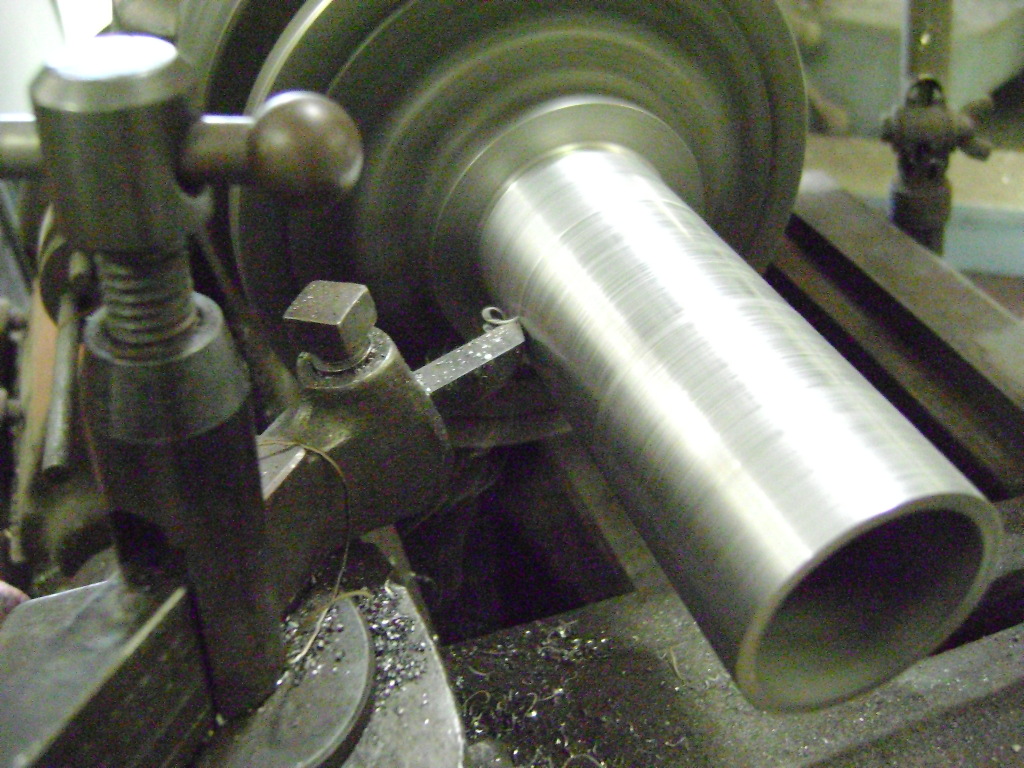(By Loren Krussow) – With only a few days to go before Bonneville Speed Week 2009, my buddy Jake’s flathead-powered 1953 Ford “Mainliner” sits spread out around the garage. The engine is here, the clutch assembly is there, the chassis/body is across the way. I don’t know where the front sheetmetal is. This is nothing unusual. With a few good work sessions and perhaps an all-nighter thrown in, it will all be back together and on a trailer heading north, ready to hit the salt flats of western Utah to see how fast a little naturally-aspirated valve-in-block V8 can push a big ol’ stock-body business coupe. Meanwhile there is a slight complication.
Somewhere a few weeks back it was decided to use a different transmission. There was really nothing wrong with the old Ford’s original manual three-speed which had already survived a few good thrashings at El Mirage as well as the local dragstrip, and there’s a lot to be said for keeping the old-car vibe in an old car, but the two seconds of coasting time between when the well-worn column-shift lever was pulled out of first gear then pushed forward and up ten inches and wiggled a bit so that second could be located was getting annoying to our impatient rookie drivers.
The local dismantling yard had an ‘80s Firebird T-5 five-speed, Jake liked the idea of having an overdrive gear available in case it was ever needed, and Flathead Jack’s sold an adaptor plate which fit perfectly in the space created by the T-5’s longer input shaft as compared to the stocker. So it all was brought together. Come assembly day however, it wouldn’t assemble. Turns out the portion of the bolted-on transmission front roller bearing retainer where the throwout bearing slides along was too small and too short for the Ford throwout and clutch-fork setup. That longer input shaft didn’t have a longer retainer/input shaft tube to match.
The normal solution would be to get on the phone and find a better combination of parts but time was getting precious. A fabricated fix would be to make a sleeve to fit over that input tube, but it would have to be only 1/32” thick which wouldn’t leave much strength for the portion where it needed to stand alone. I doubted such an arrangement would stay together in use anyway.
I actually took the part we had to the shop and chucked it up in a lathe, ready to cut on, before I thought of an acceptable fix. By machining the T-5 input sleeve down in a taper, then cutting the inside of a piece of steel tube with the same profile and forcing it on, we would get a good combination of sleeve and splice which would add the required length and diameter and not leave any thin single-layer sections. Taper-fits, where the diameter of a shaft and mating part are not constant but rather slightly cone-shaped, are commonly used around machine assemblies; they prove plenty reliable. The T-5 input and steel tube were thus machined and assembled, then cut to the final size. Looking at the part you can hardly tell it was modified.
A similar fix was applied to make a suitable front pilot bushing out of two separate parts, a stock T-5 piece cut and forced into a much-larger flathead part. I added a tiny bit of clearance for the input shaft while I was at it, to .004” up from .0025.
After a quick mock-up and a shopping trip for bolts etc., the car will be ready to go back together. It’s Wednesday AM as I write this, departure time for the daylong drive is Friday.
I’m not sure I’ll be along on this trip to Bonneville, but say “Hi” to Jake, Chad, Lance, Mathias and Dick from the San Diego Roadster Club if you happen to run across them at Speed Week. Give the ol’ ’53 (#296) a pat on the rump for luck when no one’s looking. She ain’t pretty, but she sure is sweet.
























